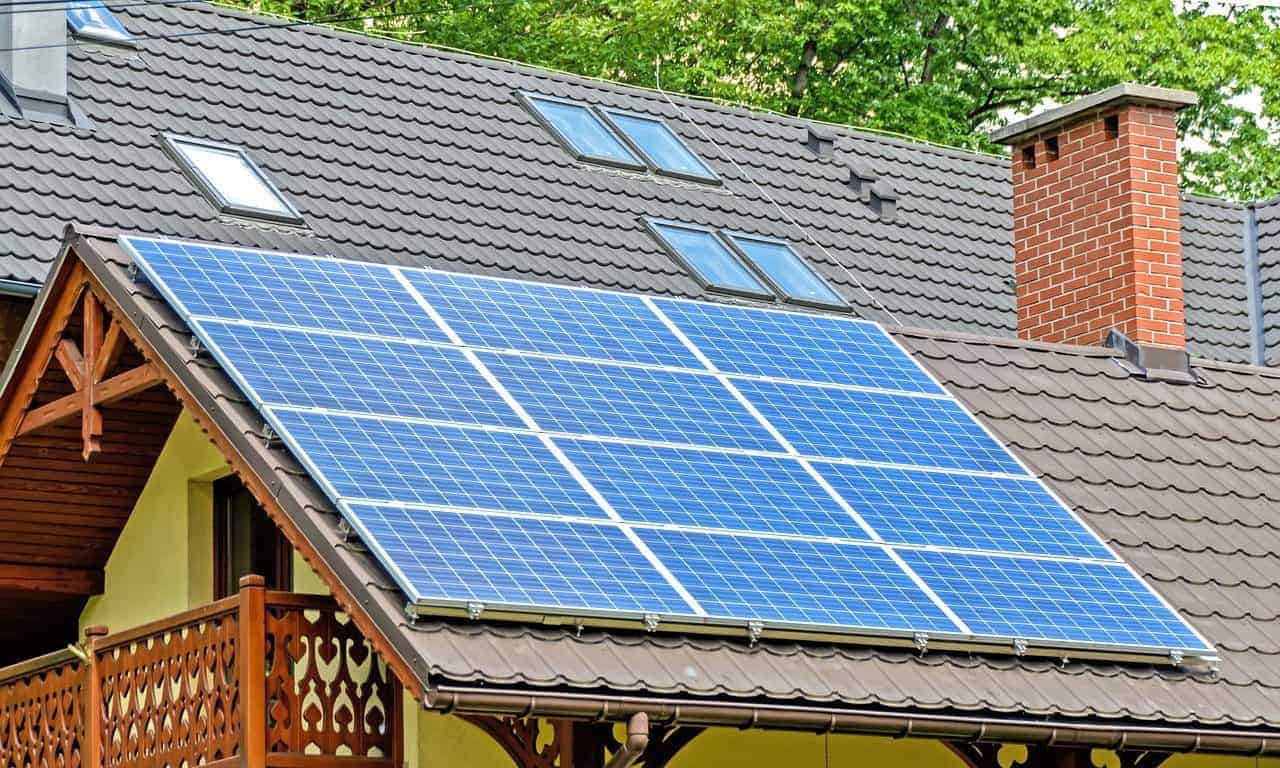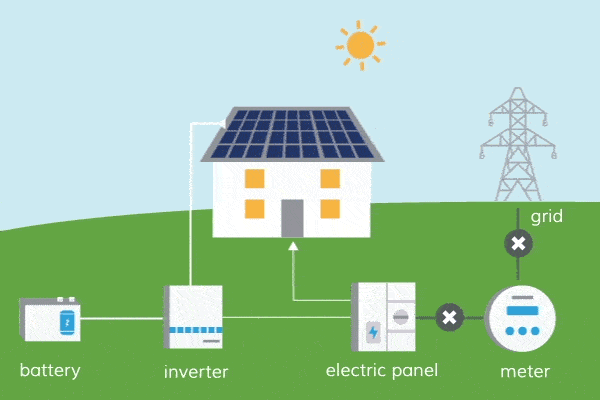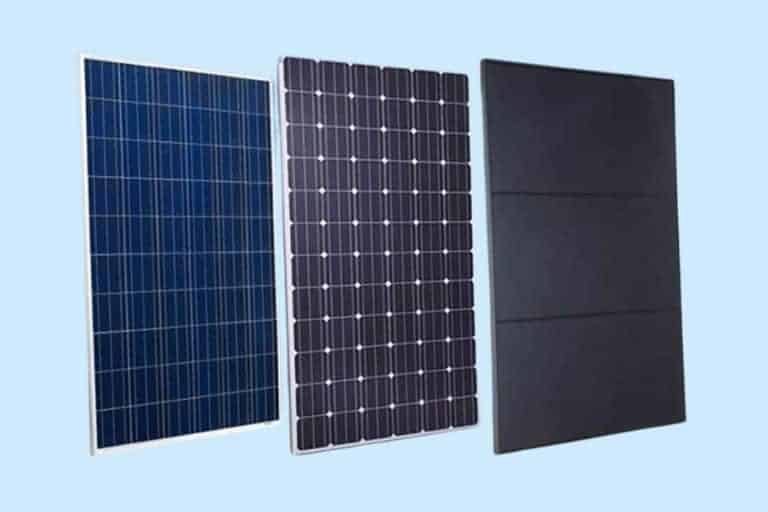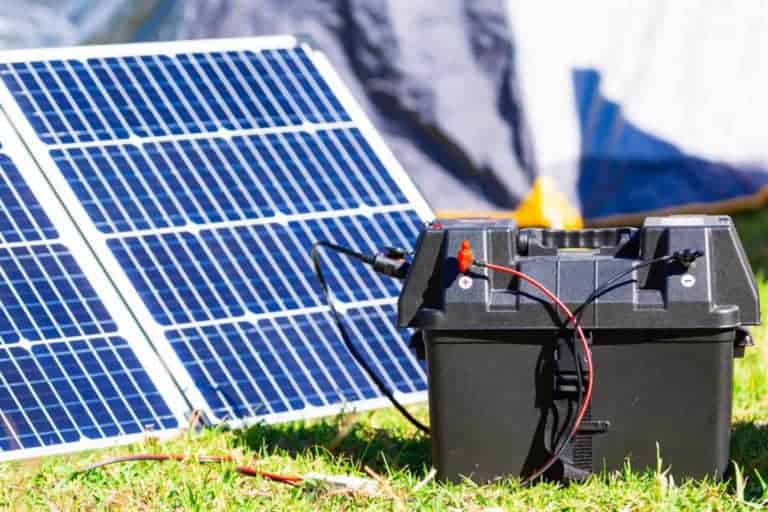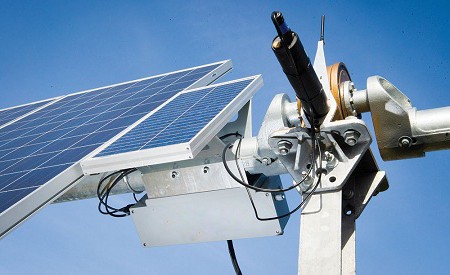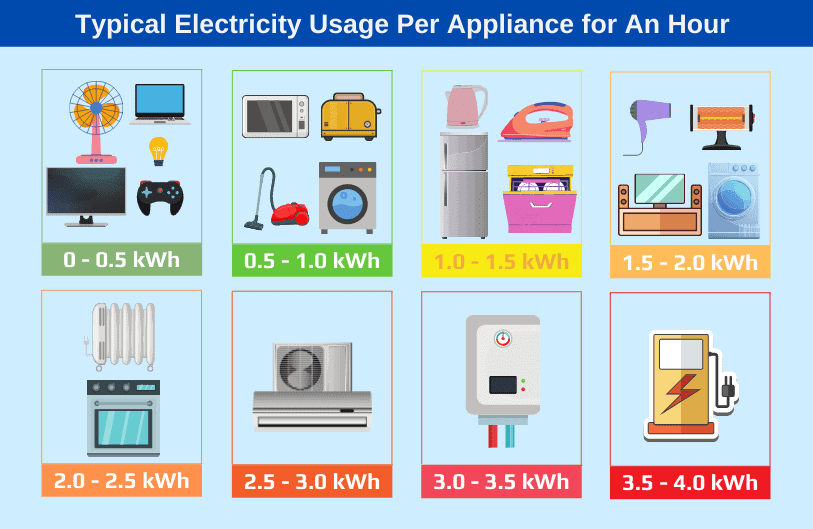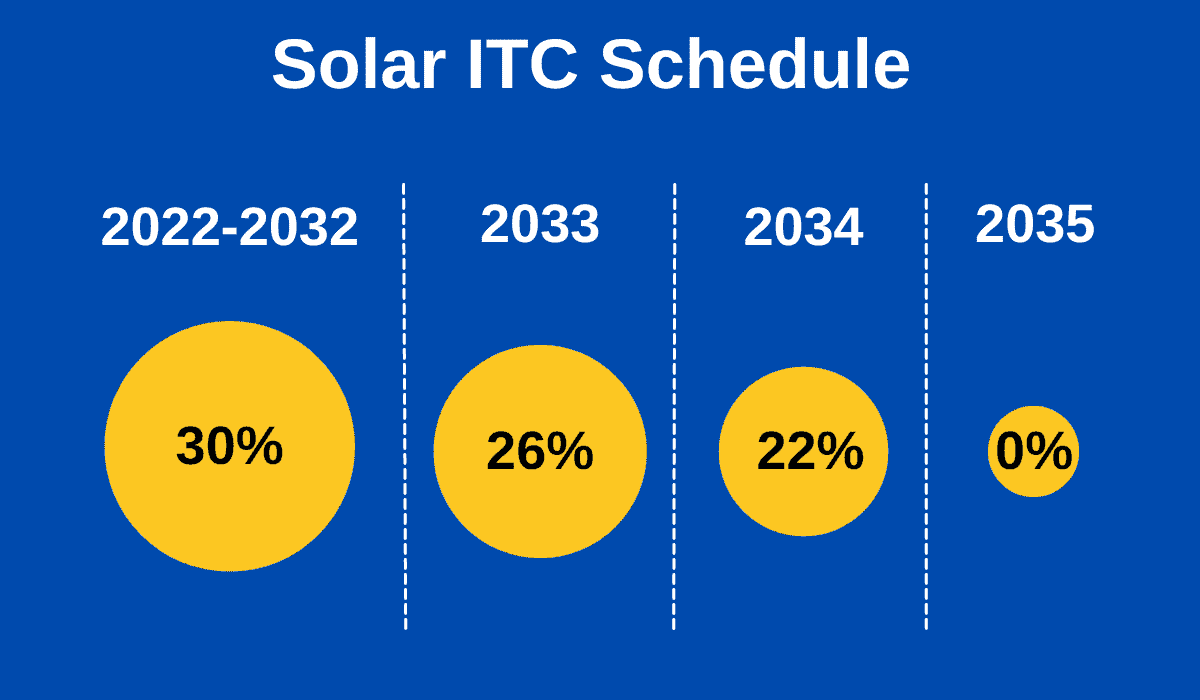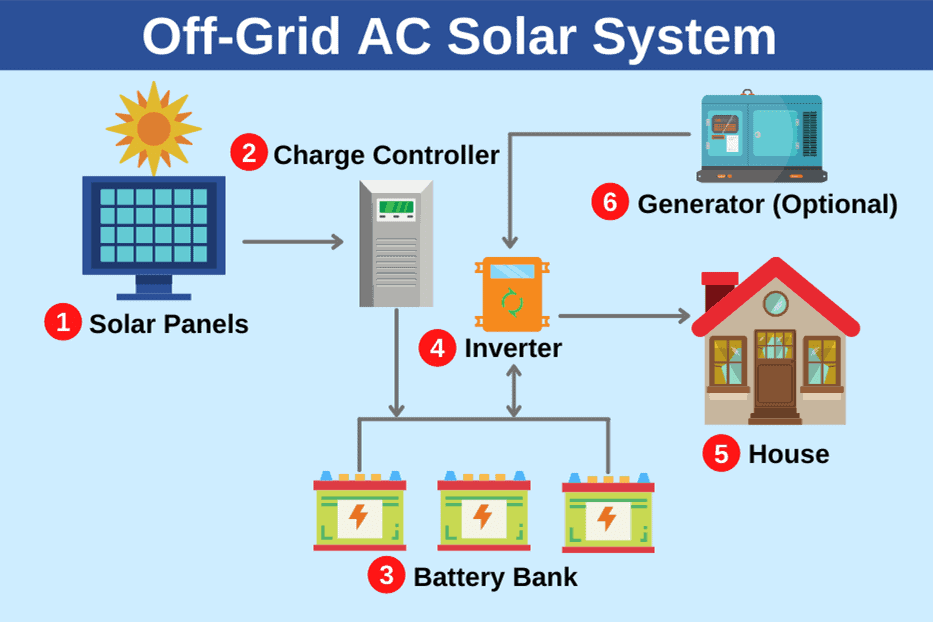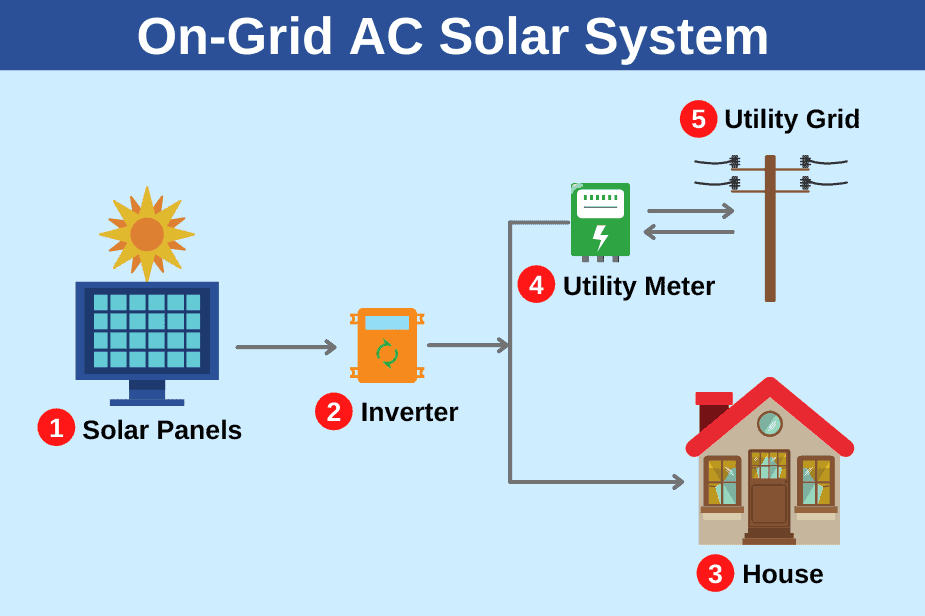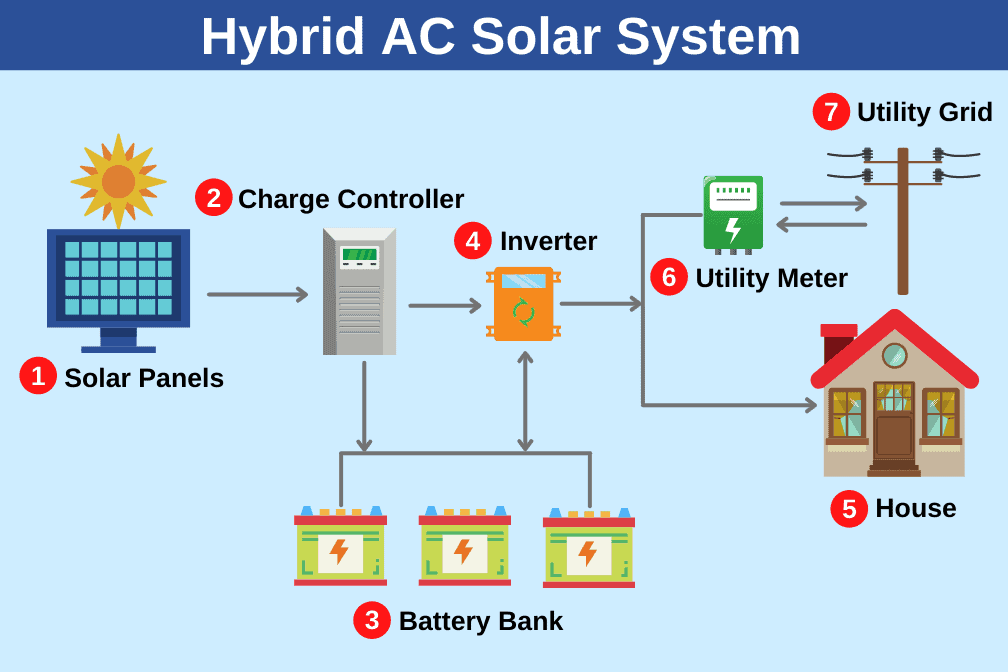Would you like to power your home with green energy? Powering your house with solar panels will welcome you into a community of 2 million homeowners in America and tens of millions of others worldwide.
Powering a house with solar panels is a prudent decision that requires a clear strategy and professional solar technicians. Complete solar power for your home includes solar panels, cables, an inverter, and battery storage.
First, the panels intercept sunlight and convert it to electricity. Electricity cables connect the photovoltaic devices and then transfer the power to the inverter. Here, the Direct Current (DC) converts to Alternating Current (AC), which helps your home appliances. Batteries are similar to what your car or phone uses to store power so that you can use them at night or when there’s no sunlight.
This post guides you into powering your residential premises with solar energy. We examine the strategy you have to lay down to have an efficient, high-quality system. We also help you get the right panels, inverters, and batteries and tips to have them installed properly.
How Solar Panels Power Your Home
In simple lingo, panels absorb the photons in sunlight and move electrons from the atoms. When electrons move from the atoms, they flow through a cable, creating a current. The created current is in DC power and is converted to AC. And, by this time, you have electricity in your home!
In summary:
- The sun shines on the panels.
- Then, the photovoltaic cells absorb photons that break electrons free.
- The moving electrons cause a current that flows through cables.
- Cables channel electrons to charge up the battery storage.
- An inverter then converts the Direct Current (DC) to Alternating Current (AC). Cables connect the inverter to the appliances in your home.
- AC flows through the cables, lights up your chandeliers, powers your fridge, TV, and microwave, among other appliances.
- At this point, you can sell off excess power to the grid.
Requirements of Powering A House With Solar Panels
A complete solar system is a combination of solar panels, inverters, batteries, and cables. Advanced systems have solar trackers, too.
Inverter
An inverter converts the Direct Current (DC) power produced by the solar panels into Alternating Current (AC) electricity. The machine works well on the exterior wall or the garage, but certainly not in your house.
Inverters form the most complex parts of the solar system; it’s very prone to damage. These inverters experience considerable variations in heat and moisture – they need professional installation and maintenance.
Installing a high-quality inverter that can withstand extreme conditions should be top of your mind. Also, put in a safe, closed location away from all forms of physical damage.
Solar panels
Solar panels contain several photovoltaic cells that absorb sunlight and turn it into Direct Current (DC) electricity. The concentration of photovoltaic cells, therefore, determines the efficiency of a solar panel.
Install solar panels that will work seamlessly with your inverters and storage. Consider the warranty, longevity, and efficiency of the panels you install.
Also, find out if the panels are thin-film, mono-crystalline, and multi-crystalline.
- Thin-film panels are cute, affordable, and less efficient.
- Polycrystalline panels are also cheap and have a low performance.
- The mono-crystalline panels are expensive, but they also have high efficiency in performance.
Cables
Cables connect the different components of your solar system. They form the path upon which electricity travels. So, they draw power from the panels to the batteries, inverters, and then to your appliances.
When mishandled, DC power overheats cables, especially when there’s a short circuit. AC power is even worse and can easily distort body functions through electrocution. So, be sure to have high-quality cables for safety’s sake.
Then, choose cables with a low resistance to prevent power loss.
Batteries
Solar battery storage is a storage system that accumulates and holds power produced by the panels. It will store the electricity harvested by your system during the day and make it available for use during the night.
Batteries keep your system running even on stormy or cloudy days. Even when the rest of the grid has a fault or is experiencing a blackout, you’ll have enough power in your storage batteries.
The most popular types of batteries include super-capacitors, lead-acid, lithium-ion, and flow batteries.
Install batteries compatible with your system and able to reserve all your surplus power. Check their capacity, depth of discharge, efficiency, ambient range of temperature, and overall lifespan.
Solar trackers
If you want to harvest the maximum power from your system, let the photovoltaic surfaces of your panels face the sun directly at all times. The trackers ensure that the surfaces are always facing the sun.
Dual-axis trackers rotate your panels to about 360°, and; they are better than the single-axis verities that go around 150° only.
Process of Powering a House with Solar Panels
Plan, assess, and execute your dream of powering your house with solar energy and live to enjoy the benefits.
1. Plan a home solar system
First, set a plan for the site for your project. Ensure there’s enough space on your roof to host the panels.
2. Calculate your home’s energy requirements
Then, assess your energy requirements. Come clear about the number of panels you want.
3. Seek professional site assessment
Talk to a professional electrician to guide you through making a sound decision. Let them assess your site and plans and advise you on solar installation appropriately.
4. Get the finances
Solar tax cries, rebates, and grants are available for residents of several states in America. See if you are eligible for state and federal solar investment funds.
5. Set up agreements with the installation contractors
Do you want grid or off-grid solar systems? If you’re selling your surplus, talk to the grid power provider.
Then, set agreements with your installation company, especially on warranty and maintenance of the system.
Choosing Your Solar Panel System
Put down a clear strategy with the professional consultation of a solar expert. Decide the best solar panel system based on your consumption needs and budget.
Sometimes, you can invest in an expensive solar system that yields enough to power your home and sell the rest to the grid. Or, you can get just enough for your family and store the rest for the night or cloudy seasons.
- Off-grid
- Of-grid
- Hybrid solar systems
The Off-grid solar system
If you want total independence and freedom with your power, choose the off-grid system. The system is free of the electricity company.
All power from your solar panels goes into the home battery storage. When it’s dark or cloudy, you can rely on the power reservoir. None of your power goes to the utility grid- every bit of surplus electricity is stored in the battery.
Of course, you have the freedom to use power without giving care about the grid. Also, you’ll never have to worry about blackouts because you’re not connected to the rest of the “trouble.”
But that’s only if your system is working correctly and a natural disaster has never hit you. If your inverter blows up, you’ll have to keep up with the dark lights and blank screens in your home.
Also, the off-grid system tends to be expensive because you have to possess storage batteries.
The On-Grid System
If you want to have a taste of both sides, consider the on-grid solar system. Your appliances will use all the power they need, and the rest will go right to the utility grid. Homeowners, therefore, can switch from the grid to the solar anytime. No battery storage is necessary as the surplus goes right to the electricity company.
If your house can produce electricity that could sustain twenty families, you will use what you need and sell the rest to the utility grid. This earns you money while keeping you connected to the rest of the city’s power—the money your power production makes you go to your bank account or prorates your utility bills.
Without battery storage and other sophisticated components, this system is far cheaper than the other two.
However, you might have to keep up with the electricity bills because you rely on the grid at night and during cloudy days. When there’s a power blackout at night, you’ll be hit like the rest of the town, too!
Hybrid Solar System
If you want to enjoy a taste of both grid and off-grid benefits to the fullest, consider having the hybrid system but with a battery backup. You’ll produce and store all the power that you need for the night and sell the rest to the grid company. Yet, if your system fails for whatever reason, the grid will supplement what you have.
When the battery storage system is fully charged, it will send the surplus to the grid. You sign with the utility grid company as both a seller and buyer of their electricity. Most of the service bills and charges will cancel out with the seller’s compensation.
In most cases, you’ll still pay monthly electricity bills unless you have a large solar plant that produces a large amount of power.
The installation price of the hybrid solar system tends to be more expensive than the on-grid system.
How Much Will Powering My House With Solar Panels Cost?
The straight answer is- about $23,000. The best answer is that you’ll pay depending on your installation company, equipment brand, and jurisdiction. Some solar power companies will even go ahead to give you incentives.
Roughly, you should pay around $20000 for 1500 square feet of 6kw solar panels. Be sure to talk with the solar company for a detailed quotation.
|
Solar Panel System Size |
Average Solar Installation Costs |
|
2 kW |
$6,025 |
|
3 kW |
$9,225 |
|
4 kW |
$12,035 |
|
5 kW |
$14,893 |
|
6 kW |
$19,500 |
|
7 kW |
$21,325 |
|
8 kW |
$24,550 |
How Many Panels Can Power My House?
Get as many solar panels as can produce enough electricity for your home (and/or sale). Your monthly utility bill should show you a clear power consumption during the peak and off-peak hours. Use it to calculate the total amount of power you need.
Then, see the estimated power output you’ll get from each of the panels. So, a 1500 square foot roof should have about 15-20 panels.
But, the number of solar panels will vary depending on their size, latitude, and home’s shade.

